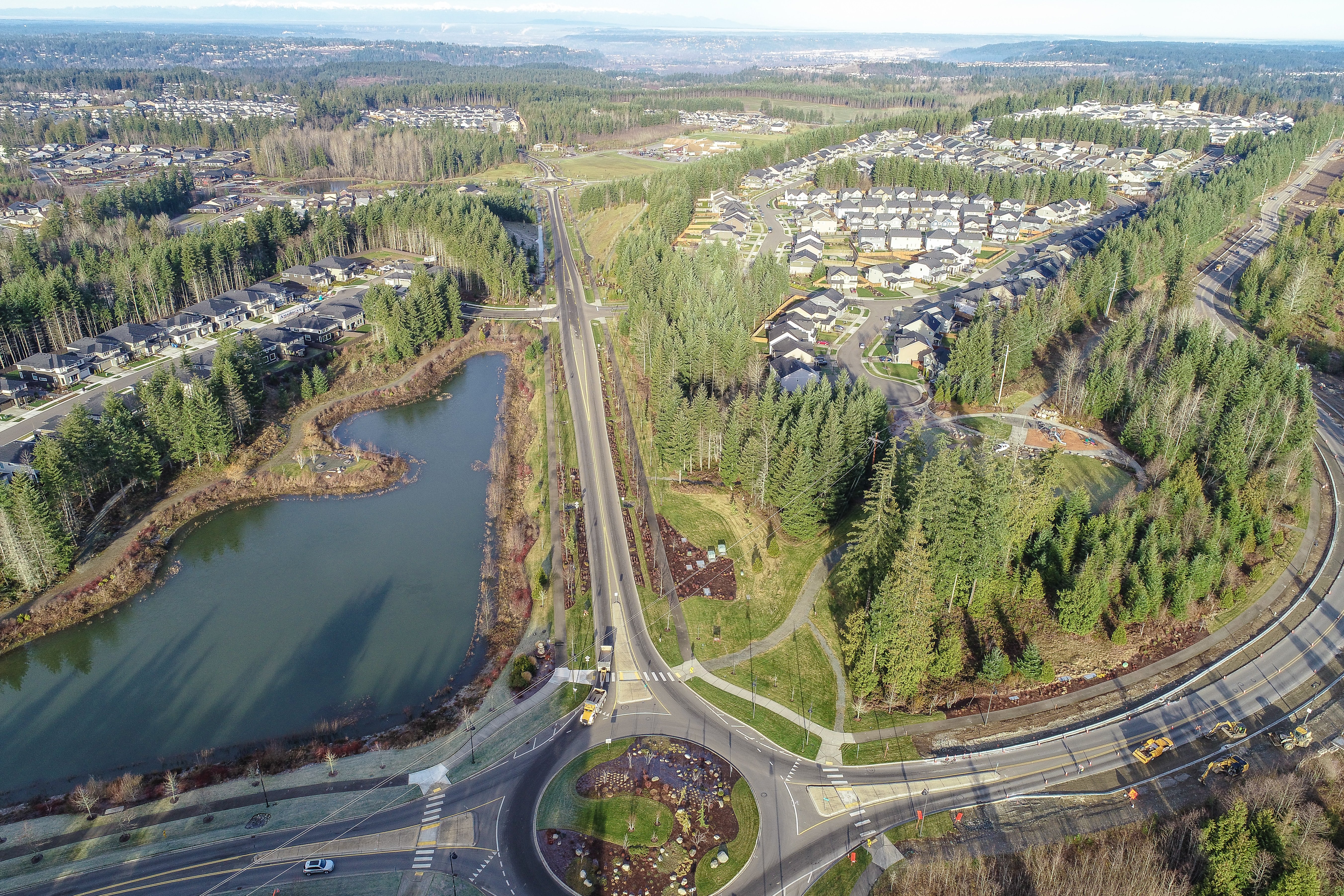.jpg) Stormwater facilities for new developments are generally required by code to treat and detain stormwater to at least pre-development conditions. In urban spaces, dense with paved and hard surfaces, it is imperative to treat stormwater to improve water quality and slow runoff. In many cases, storm facilities are viewed as a loss of developable land that cuts into your profit margins. Just because your engineering consultants are mandated to manage the water to a pre-development state, doesn’t mean your stormwater facilities have to look engineered! Storm facilities can actually be amenities that, when thoughtfully designed, will contribute to the visual quality of your development. Storm ponds can be beautiful first and yet still be functional and code compliant.
Stormwater facilities for new developments are generally required by code to treat and detain stormwater to at least pre-development conditions. In urban spaces, dense with paved and hard surfaces, it is imperative to treat stormwater to improve water quality and slow runoff. In many cases, storm facilities are viewed as a loss of developable land that cuts into your profit margins. Just because your engineering consultants are mandated to manage the water to a pre-development state, doesn’t mean your stormwater facilities have to look engineered! Storm facilities can actually be amenities that, when thoughtfully designed, will contribute to the visual quality of your development. Storm ponds can be beautiful first and yet still be functional and code compliant.
A common approach to stormwater facility design includes reducing site impact by using steeper slopes and locating them out of residents’ sight. While this is an easy approach to limit liability and reduce used land, it also triggers the requirement for the facility to be fenced and greatly degrades visual quality. It is possible and affordable to design functioning treatment facilities that don’t erode the visual quality of your property. When designed with viewscape in mind these facilities can help frame a vista. Some examples of how to do this include:
-
Reducing slopes leading to detention ponds to accommodate safety requirements
-
Using native vegetation to signal a natural barrier
-
Locating storm facilities in plain sight to increase safety. They can be entry features instead of weed-ridden, fenced-off holes in the back of the development, that will likely not get maintained and prematurely fail due to lack of maintenance.
-
Designing outfalls and overflow structures to blend in with the development and adds character to increase visual quality.
-
Designing retention and detention ponds with a more organic shape
-
Adding a sculpture in the facility to increase visual interest

To achieve the maximum value of your project it is important to include both a civil engineer and a landscape architect in concept development. This fosters collaboration on the programming and design of your storm facilities instead of asking a Landscape Architect to use vegetation to hide an unsightly, pre-engineering, and walled-off pond that locked into the site layout. By working together, the design team ensures these facilities are integrated into the site landscape by following the natural forms dictated by site topography and hydrology, along with ensuring the storm facility will function properly.
This approach allows developers to integrate storm facilities into the design without adding significant costs. When form and function are both prioritized, stormwater treatment facilities will add value to your development by providing a higher level of visual quality, providing passive recreation opportunities, and may result in increased revenue. So do not hide your stormwater facility in the back of your project, integrate it into your project and maximize its value and you will benefit from the results.
